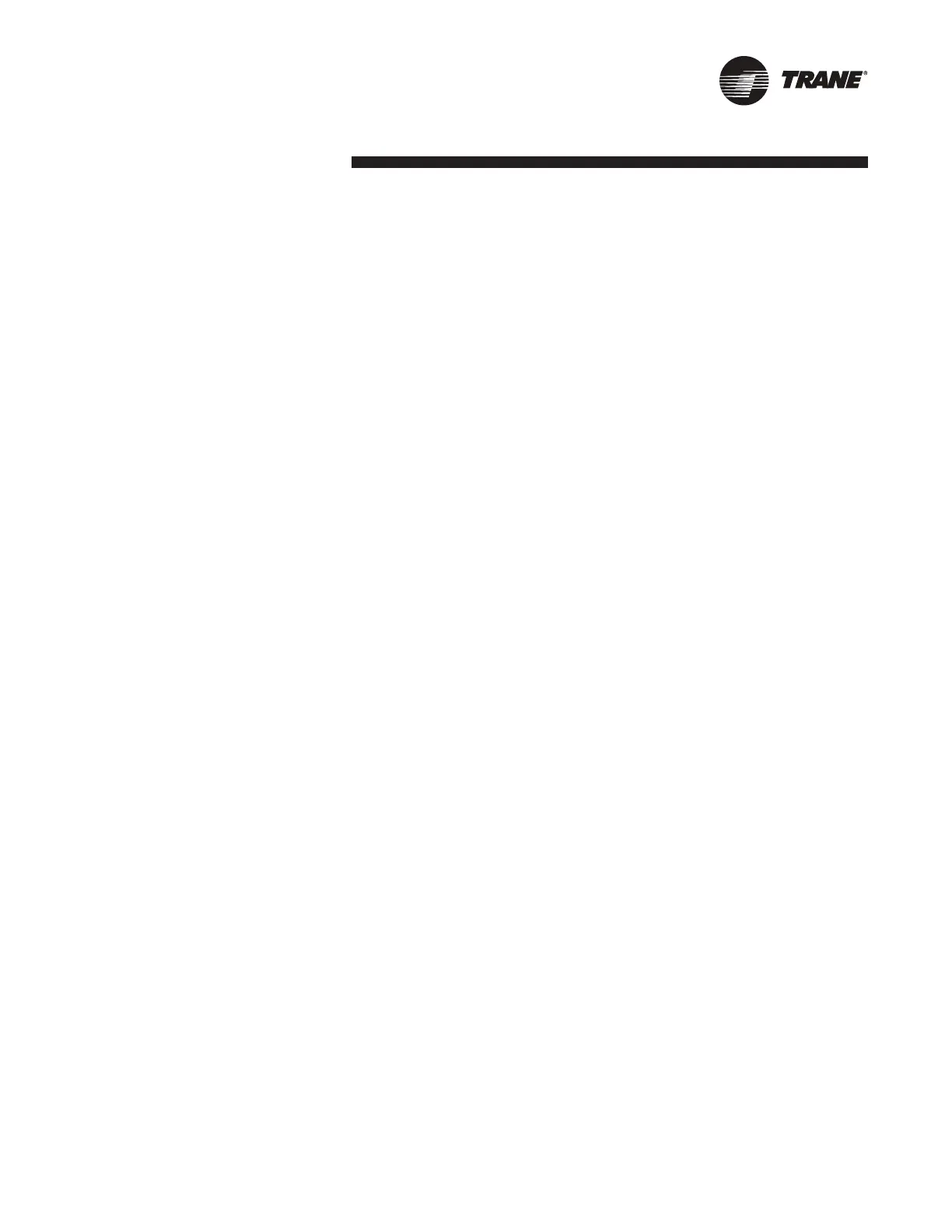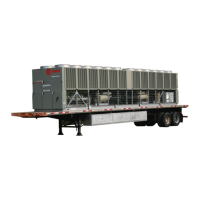RTAC-SVX002A-EN 110
Maintenance Procedures
- 1. To measure oil level, use the
oil drain valve on the oil line and a
service valve on the discharge line.
This measurement can only be
made when the circuit is not running.
- Note: The level is measured from the
bottom of the separator and 1" must
be subtracted for the thickness of the
bottom plate.
- 2. The initial oil charge should
be approximately at the level in the
above chart. This is the approximate
oil level if all the oil is in the oil lines,
lter and oil sump and the unit is in
vacuum so that there is no refrigerant
dissolved in the oil.
- 3. After the unit has run for a
while, the oil level in the sump can
vary greatly. However, if the unit has
run “normal” conditions for a long
time the level should resemble the
level in the above chart. (+1" to – 4"
(25 to -101mm) is acceptable.)
- The eld charging procedure
depends on the circumstances that
resulted in the need for oil charge.
- 1. Some service procedures may
result in loss of small quantities of oil
which must be replaced (oil analysis,
lter replacement, re-tubing the
evaporator, etc.).
- 2. Additionally, some
maintenance procedures may result
in virtually all of the oil being removed
(compressor motor burn or total
removal of the charge to trouble
shoot a unit).
- 3. Finally, leaks may result in a
loss of oil that must be replaced.
- Factory (initial) Oil Charging
Procedure
- The initial charging procedure should
be followed any time the unit is new
or has had all of the oil removed.
- 4. If the isolation valves is
closed, then the charge may be
trapped in the evaporator. In either
case, the high side of the system
should not be pressurized.
- 5. The oil line shut off valve must
be open to allow the oil to pass into
the oil lines and the oil separator.
- 6. The oil charging port is a ¼”
(6mm) are tting with a schrader
valve that is on the side of the oil lter
housing. This is the port that must be
used to add oil into the compressor so
that the lter and lines are full at the
rst start of the compressor.
- 7. On single compressor circuits
all the oil should be put into the circuit
through the oil charging port on the
compressor lter housing. On two
compressor circuits put approximately
½ of the oil into the unit through each
of the two oil charging ports on the
two compressors.
- 8. Oil may be put into the unit
using either of two methods:
- CAUTION
- Equipment Damage!
- Use only Trane OIL00048 in
the RTAC units to avoid any
catastrophic damage to the
compressor or unit.
- • Have the unit in vacuum. Note that
the vacuum connection should be
made on the unit at the service valve
that is on the discharge line. Hook
up the oil charging hose to the oil
charging tting and submerse the
other end into the oil container. Let
the vacuum draw the required amount
of oil into the unit.
- • Have the unit at the same pressure
as the oil. Hook up the oil charging
hose to the oil charging tting and
the other end to an oil pump. Use
the pump to draw oil out of the oil
container and push the required
amount of oil into the unit.
- NOTE: The compressor lter has an
internal shut off valve that will prevent
oil from entering the compressor
while the compressor is not running.
Therefore, there is no concern about
ooding the compressor with oil.

